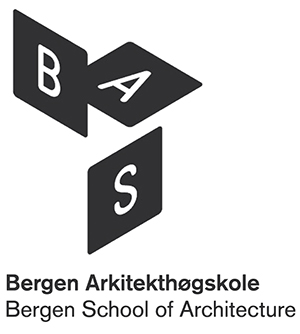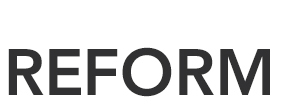REFORM | Mastercourse at Bergen School of Architecture | Spring 2021
Teachers:Pavlina Lucas, APP | Magnus Wåge, APP | Tom Chamberlain, DAV
Students:
Steffen Marøy Alvær, Pauline Bosman, Christine Hagatun, Camilla Nneka Inalu, Aleksandra Ivashkevich, Maren Mohn Kverneland, Bjørn Are Leivdal, Silje Helen Sundal Lockert, Petter Ludvigsen, Zoelie Millereau-Dubesset, Martin Håland Puntervoll, Maren Roscher, Mads Michael Senneseth, Trine Stunner, Mumtaaz Viaene, Ola Torheim Vik, Inger Helen Øvrebø.
Course description
Reduce, recycle, reuse - mottos of our time. The practice of architecture and urban development – traditionally part and parcel of a culture of unleashed consumption and of systems driven by "new" and "more" – needs to be rethought. REform delves into the theme of transformation with the eyes of our time and explores this, beyond the practice of conserving heritage, as a key ingredient for an updated attitude towards the production and use of architectural space.
Working with existing structures, we tapped into the pulse of cultural and economic changes and rehearsed how our built environment can absorb and participate in these shifting conditions. What elements have high resistance to change? Which aspects can be easily transformed? What possibilities for change arise from new patterns of living and working? What strategies can be applied to achieve radical reduction, recycling and reuse?
Pedagogical approach
We learned by doing. Concepts were constantly under development in response to findings. Using a range of methods – architectural and artistic – we registered and studied the sites and their context. In the process we unveiled, discovered, analysed, reflected, and advanced the proposals. We looked into the different performative aspects of the proposals and the interaction between these – for example function, structure, materials, envelop, energy use, etc – and develop strategies to deal with these themes. The projects that emerged from the course form collectively an atlas of possible answers that incite more questions and open up for further investigations.
Learning outcomes
Students gained experience in working within a tight set of physical, historical and societal parameters and they expanded their capacity to develop and communicate a complex architectural proposal. By drawing on and transforming existing structures, they sharpened their skills of observation and gained knowledge in structural systems, construction methods and architectural details.
Course structure
Students are expected to propose three potential sites that fit the scope of the course. These can be buildings, infrastructural elements, or programmed outdoor areas. They should be located in an already established environment with a certain level of complexity and have the potential/need for a change. They should be easily accessible, and it would be an advantage if drawings, maps, and other archival documents are available. From the pool of suggestions students will choose one building to work with, either individually or in teams of 2-3.
TASKS
Potential sitesConsider carefully the program and find three potential sites. These can be buildings, infrastructural elements, or programmed outdoor areas. They should be located in an already established environment with a certain level of complexity and have the potential/need for a change. They should be easily accessible, both in terms of distance and openness, and it would be an advantage if drawings, maps, and other archival documents are available.
The treasury
Collect material about your site - architectural drawings, historical maps, photos, surveys, regulations, press clippings, elements from the site, and any other material you deem relevant. Classify the collected material according to a chosen system of categories.
Poster
Assemble fragments from the treasury on an A2 analogue poster that creates a narrative. Keywords: add, remove, redo, copy, mirror, fold, wave, rotate, refer, differ, gather, splash, stretch, remember, surround, connect...
Found object
Use a found object, something that is already a ‘thing’ and work with this to produce a model that reveals your current intentions for the site/building that you are working with. Employ the method of improvisation/bricolage and engage with your material in a transactional process.
Performance/1:1
Using props/costumes create a performance that gives your site a new program/character. Document your performance.
Or: Make a sign that you affix to your building/site. Consider how the material and graphic character of the sign works with the content and how the architecture becomes contingent, appropriated by the sign.
RE- conceptual models
Choose three “RE-” verbs that express your approach towards your site. Make the action prescribed by each verb operational in a physical concept model. Produce a one-minute film of each model that reaveals your intentions. State only the verb associated with each model, all else should be communicated by the film´s image and sound.
Incremental manipulation
Make a precise hand drawing (plan, section or elevation) of your site, or a part of it, in scale. This should be as accurate as possible according to how your site is now. Treat the completed drawing as a found object, and change it in incremental steps, documenting the stages of your manipulation in a film of max 2 minutes. Reflect on your process, intentions and findings.
The essential
Make a hand drawing of your site and use this as a base for exposing what you find essential by erasing everything else. You can introduce degrees of erasure and therefore a hierarchy. Make 3 versions with different value sets and different approaches to the essential. Present the drawings as films, animations, a series of picture or a storyboard. Make a new hand drawing where you reconfigure the space around the essential elements. Discuss your choices.
Taking Stock
To take stock (of something) means to make an appraisal of the resources and potentialities of a situation before deciding what to do next. Revisit and review the work that you have produced so far. Identify key findings and give a title to each of these. Assemble your findings and titles in a collage that presents coherently where you are now. Write a text (one A4) reflecting critically on the process and outcomes of your taking stock. Share your collage, written reflections, and your thoughts on how to proceed in a 10 minute presentation.

